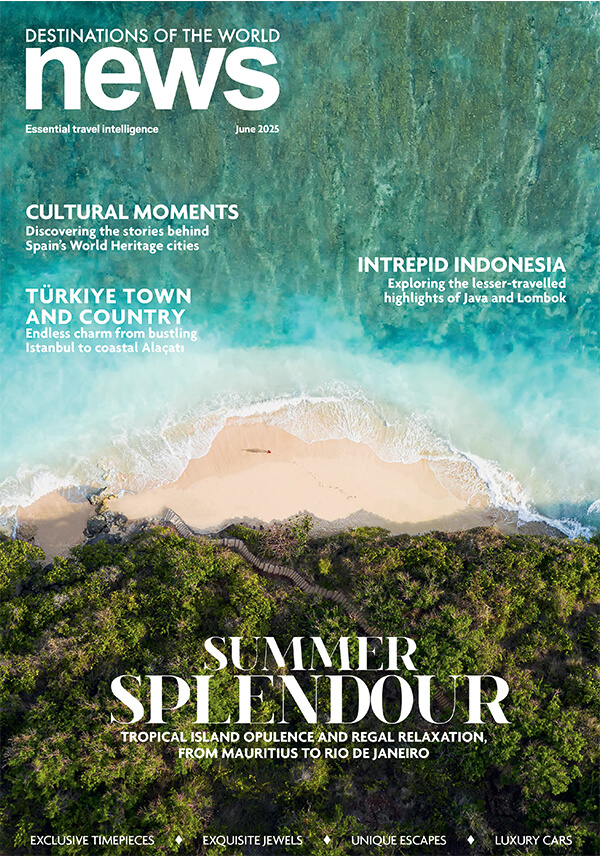Much like selecting an outfit, choosing a fragrance is a highly personal deliberation – a notion Renaud Salmon, chief creative officer of high perfumery house, Amouage, is no stranger to. Having spent the first decade of his career employed by luxury fashion brands including Delvaux and Louis Vuitton, the Berlin-born creative then transitioned into the world of perfume, working alongside distinguished fashion designers to craft some of the world’s most renowned scents, most notable, during his prominent tenure as vice president of Marc Jacobs Fragrances.
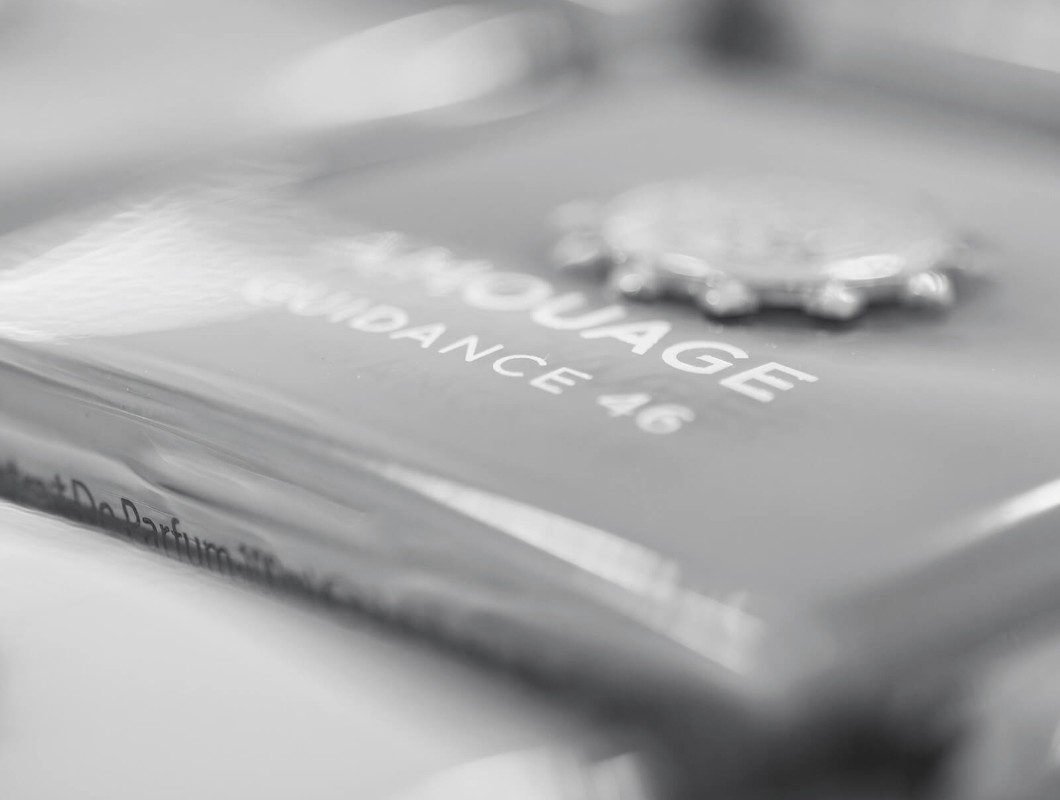
Recruited by Amouage in 2019, owing to his obsessive attention to detail and commitment to the finest ingredients, Salmon is accountable for navigating the fragrance house’s ever-evolving journey of redefining the Arabian art of perfume, by bringing innovative modernity and expert artistry to its handmade creations, while masterfully honouring its storied Omani heritage.
What drives your passion for perfume and how did you get into the industry?
A passion for perfume is something you feel deep inside. Since I was a child, I wanted to smell everything, and play with flowers and unique ingredients. For me, it started with my mother’s shampoos. I would mix them and try to create new versions. My father was passionate about flowers too, and weekends were spent in the garden. Being surrounded by nature was the norm for me. Initially, I actually wanted to be a fashion designer, and when
I joined a fashion brand, I was responsible for its perfumes. It was there, I fell in love with fragrance and realised I wanted to combine
my love for luxury and fashion, with my appreciation for perfumes and nature. Perfumery is fascinating because it connects the luxury world with the natural world. It relies heavily on nature, and while people often see luxury and nature as opposites, perfumery shows there is a deep connection between the two.
That’s a really interesting outlook,
and Oman, the home of Amouage, unquestionably has incredible nature and breathtaking landscapes. Which country inspires your work the most?
Well, first and foremost, as you mention, Oman. It’s where I spend most of my time, even though I travel a lot. Oman’s diversity – the mountains, the coast, the wadis, the rocks – all provide a vast source of inspiration. The people, the culture, and the historical aspects are also incredibly inspiring. When you look at a country as a source of inspiration, you can view it through different lenses (historical, geographical, cultural etc.). Then, there are the countries where our ingredients come from. We source ingredients in Oman, of course, but also from other cherished destinations. Last year, I visited Sri Lanka, where we find many exquisite ingredients including tea, cinnamon and clove. It was
a fascinating trip and a great source of inspiration. India is also incredible, with its fragrant flowers such as jasmine and rose, from the beautiful region of Tamil Nadu. Following the path of our ingredients is
a wonderful way to travel and gain inspiration.
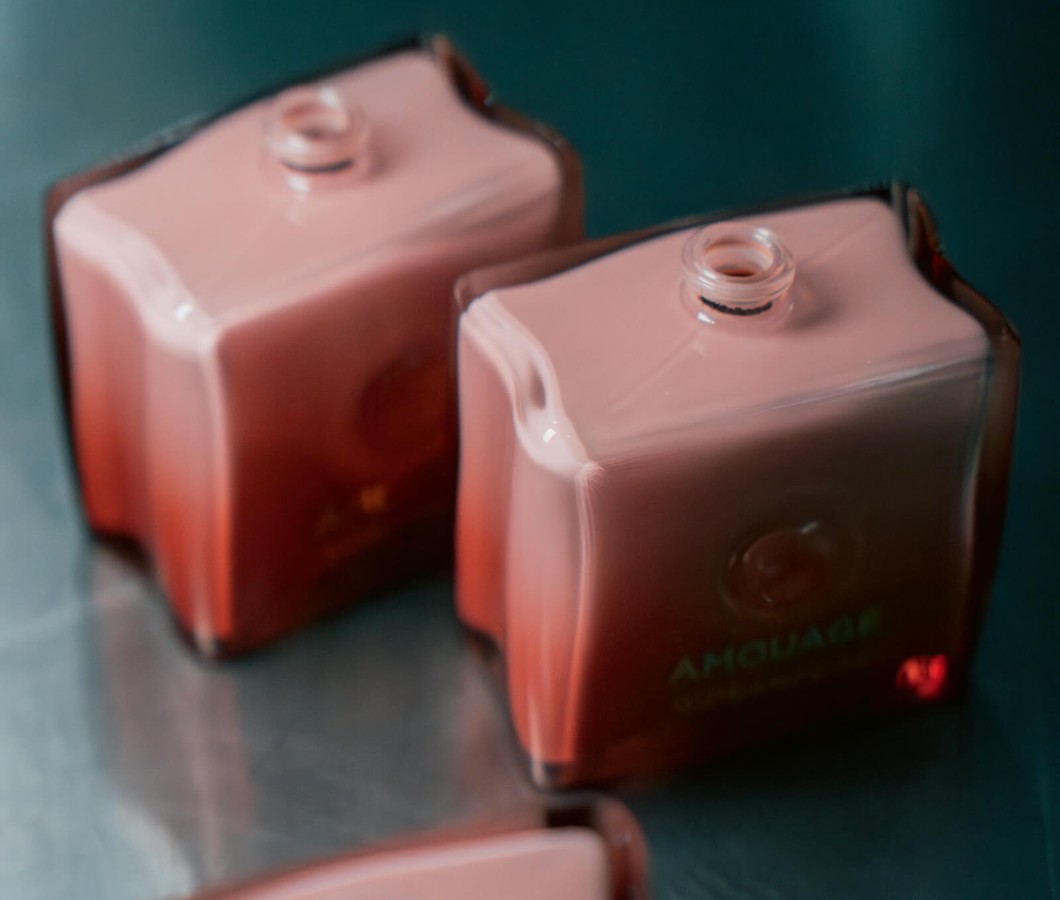
We couldn’t agree more. Tell us, in your expert opinion, how should one go about selecting a new fragrance?
Trust your nose first. Don’t be overly influenced by packaging, labels, or other external factors. My second piece of advice
is to wear the fragrance before making
a decision. Some people just smell a blotter and make a quick decision. But a perfume is like a person – you discover its personality over time. It’s also interesting to understand why you like a particular perfume. If you have a favourite, try to identify which ingredients
it contains. For instance, if you love a perfume with jasmine, consider exploring other jasmine-based perfumes, as they can vary widely in personality. Some might be very floral, others might be sweet or have
a mineral-like quality. Starting with what you know you like, can guide you in building
a personal collection of perfumes.
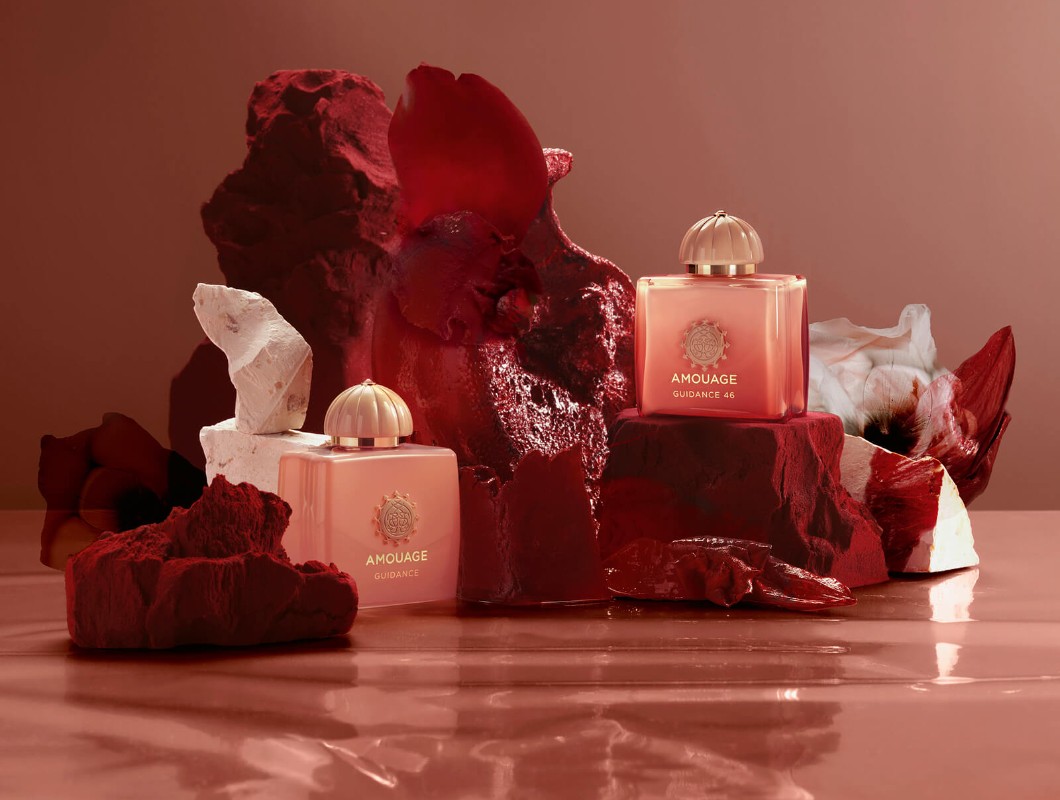
I personally wear a lot of men’s fragrances. What are your thoughts on fragrance being gender-neutral, with individuals selecting
a scent they resonate with, rather than being dictated by what’s assumed to be masculine or feminine?
That’s a very good question. We need to remember that initially, perfumes were not gendered. Perfumes were originally created without gender distinctions. It was only for marketing reasons that people started assigning genders to fragrances, creating a way to help consumers browse perfumes based on certain assumptions. However, these assumptions are often based on personal preferences, and those preferences vary widely, depending on where you are in the world. Having lived in different continents, I’ve noticed that fragrance preferences are very different. In the GCC region, for example, rose – a flower typically considered feminine in Europe – is commonly worn by men. In India, men often wear jasmine, which in the United States is often associated with women. Sometimes it might appear that it’s “on trend” to say that perfumes are genderless, but it’s more than just a trend. It’s about allowing people to feel comfortable wearing whatever they want. In a world with so many societal restrictions, I believe perfumery should remain a territory free from such codes, allowing individuals to express what they feel. Close your eyes and trust your nose.
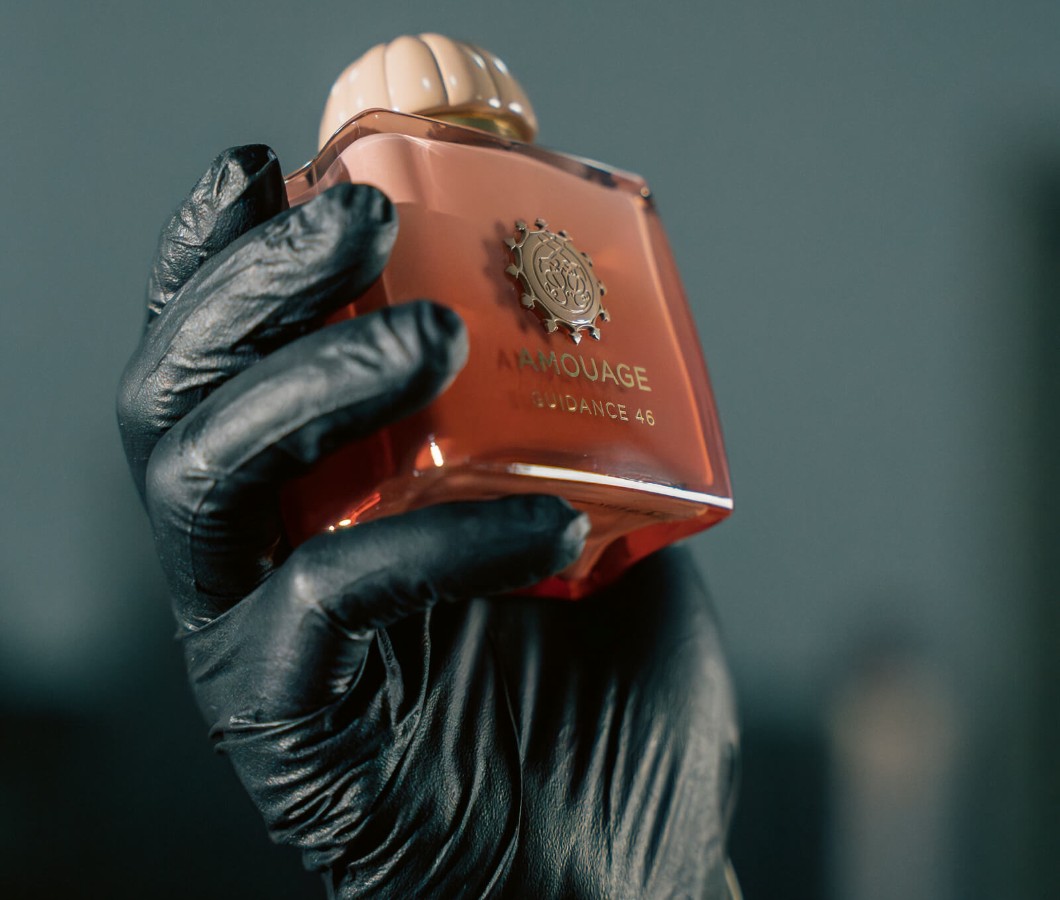
That’s great advice. Please tell us about Amouage’s latest scent, Guidance 46…
Guidance 46 is something very special. It’s an exceptional extract, which means it’s a more concentrated fragrance compared to an eau de parfum. At Amouage, we have eau de parfum, exceptional extracts, and attars. Our exceptional extracts contain over 40 per cent pure perfume oils. In the case of Guidance 46, the number represents the exact concentration – 46 per cent pure perfume oils. This high concentration makes the fragrance precious, and gives it
a unique behaviour in terms of diffusion. The scent feels dense and unfolds gradually over time. You don’t just discover this fragrance in
a few minutes or hours. Sometimes it takes days to fully appreciate its evolution. When
I first sprayed it while working with perfumer, Quentin Bisch, we were evaluating the fragrance and kept on discovering new notes, even days after the initial spray. Guidance 46 is the exceptional extract version of our original, Guidance eau de parfum, a fragrance that made a significant impact when it was launched. It quickly became one of the most-loved Amouage creations globally, often selling out.
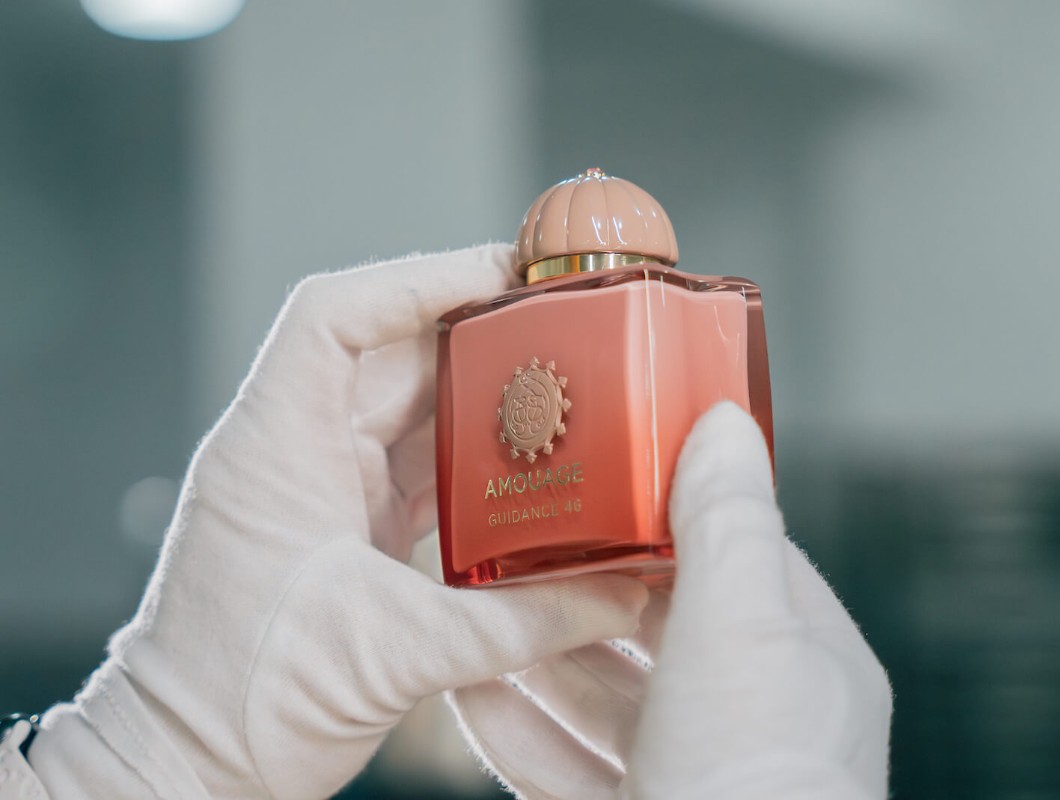
Every Amouage fragrance is produced by hand in Oman, so our production capacity is naturally limited by both the human factor, and the availability of natural ingredients. What makes Guidance so special is that it has a unique personality – a loud whisper, as I like to describe it. It combines delicate notes like hazelnut and pear with stronger ones such as sandalwood and Akigalawood, which is derived from patchouli. This contrast between fragile and bold notes creates a fragrance that’s extremely generous, embodying the essence of Amouage. However, we wanted to create something even more exceptional. That’s why we worked with Quentin Bisch to develop this extract. It’s not just about the higher concentration (46 per cent versus the original 25 per cent), but also about adding new notes that enhance the fragrance’s complexity over time. We included ingredients like rose water and pink pepper for more delicate notes, as well as denser ones like ambrette – a beautiful and expensive ingredient that smells a little like natural musk, adding a wonderfully rich texture to the fragrance.
For those that may not know, please explain top, middle, and base notes, and the role they play…
It would be my pleasure to. Top, middle, and base notes are terms we use in perfumery
to describe how different ingredients in
a fragrance evolve over time. Both natural and synthetic ingredients behave uniquely in terms of diffusion and longevity. For example, ingredients such as citruses or spices are typically volatile. Think of a lemon note – the molecules are light, so you’ll smell them first because they evaporate and fade quickly. These are what we call top notes. They’re vibrant and sparkling but short-lived. Middle notes (or heart notes), come in to play after the top notes dissipate. These usually include floral notes, which are more moderate in weight. You’ll start to notice them after a few minutes, and they can last for several hours, depending on the fragrance. Finally, we have the base notes, which are the heavier ones like woods, musks, amber, and leather. These notes take longer to emerge, but are prominent in the “dry-down” phase of the fragrance. They can linger for several hours, or even until the next day. Interestingly, some ingredients span across all these stages. A great example is frankincense, a unique ingredient we use
at Amouage. With its vibrant character, frankincense is detected in the top notes, continues through the heart notes, and remains present in the base notes, making it
a versatile and fascinating component.
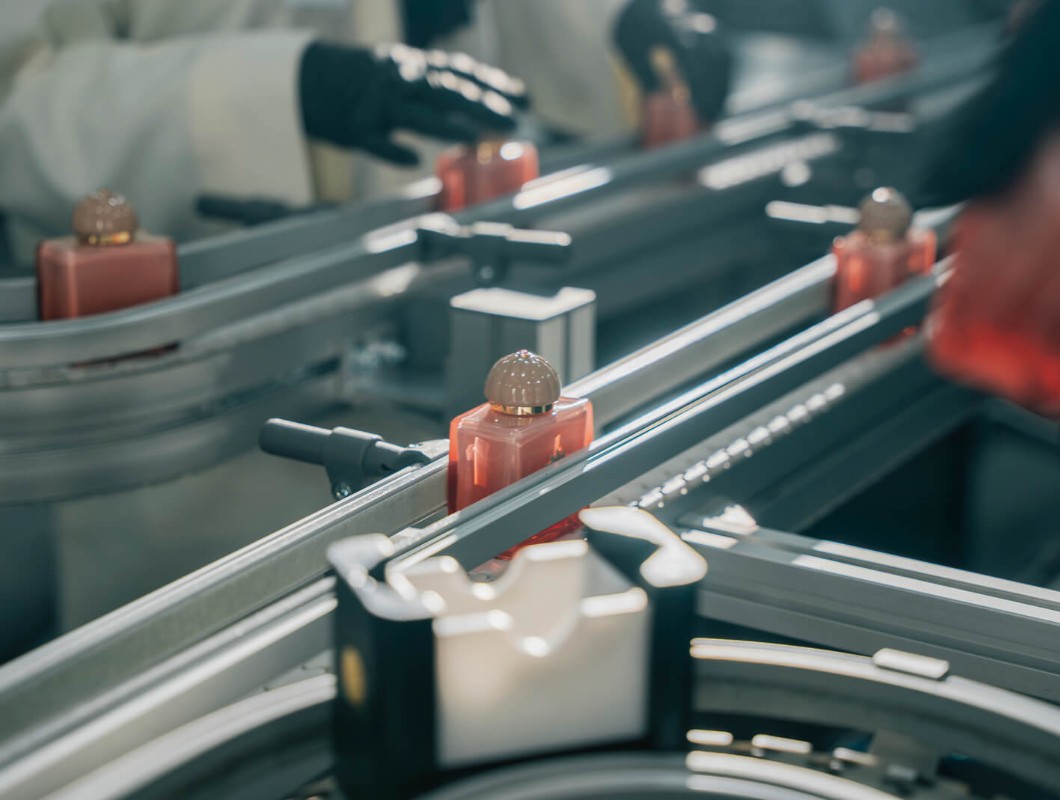
Very interesting. It’s often said that the “perfume shower” is the best way to apply fragrance. What are your thoughts on
this method?
I love the idea of the perfume shower. It’s dramatic and very enjoyable. I think it’s
a great way to apply fragrance. Some people apply fragrances too close to their skin or clothes, which isn’t ideal, especially with
a high-concentration fragrance. This can cause staining. I usually recommend spraying from
a distance of about 20 centimetres or more.
If you’re concerned about wasting the fragrance, I suggest applying it to both your skin and clothes. The fragrance behaves differently on each. On clothes, it’s more neutral, while on the skin, it reacts with body heat and evaporates faster. Also, try applying the fragrance to parts of your body that move, like your wrists, shoulders, or hips. This
helps with scent diffusion, making it more noticeable to others. I personally love applying fragrance to my wrists, since I talk with my hands a lot.
Any other application tips?
I recommend five sprays. Some people think applying more will make the fragrance stronger and last longer, but that’s not true.
It’s more about where you apply it. I suggest one spray on each wrist, one on each shoulder or hip, and a final spray on the back of the neck, or in the hair.
What’s the biggest myth or misconception when it comes to fragrance?
A big misconception is that rubbing your wrists together breaks the fragrance molecules. It doesn’t break the molecules, but it does create heat which speeds up the evaporation of the scent. So, if you want to experience the “dry-down” of the fragrance faster, go ahead and rub wrists together. It’s fine to do it as long as you understand what it does.
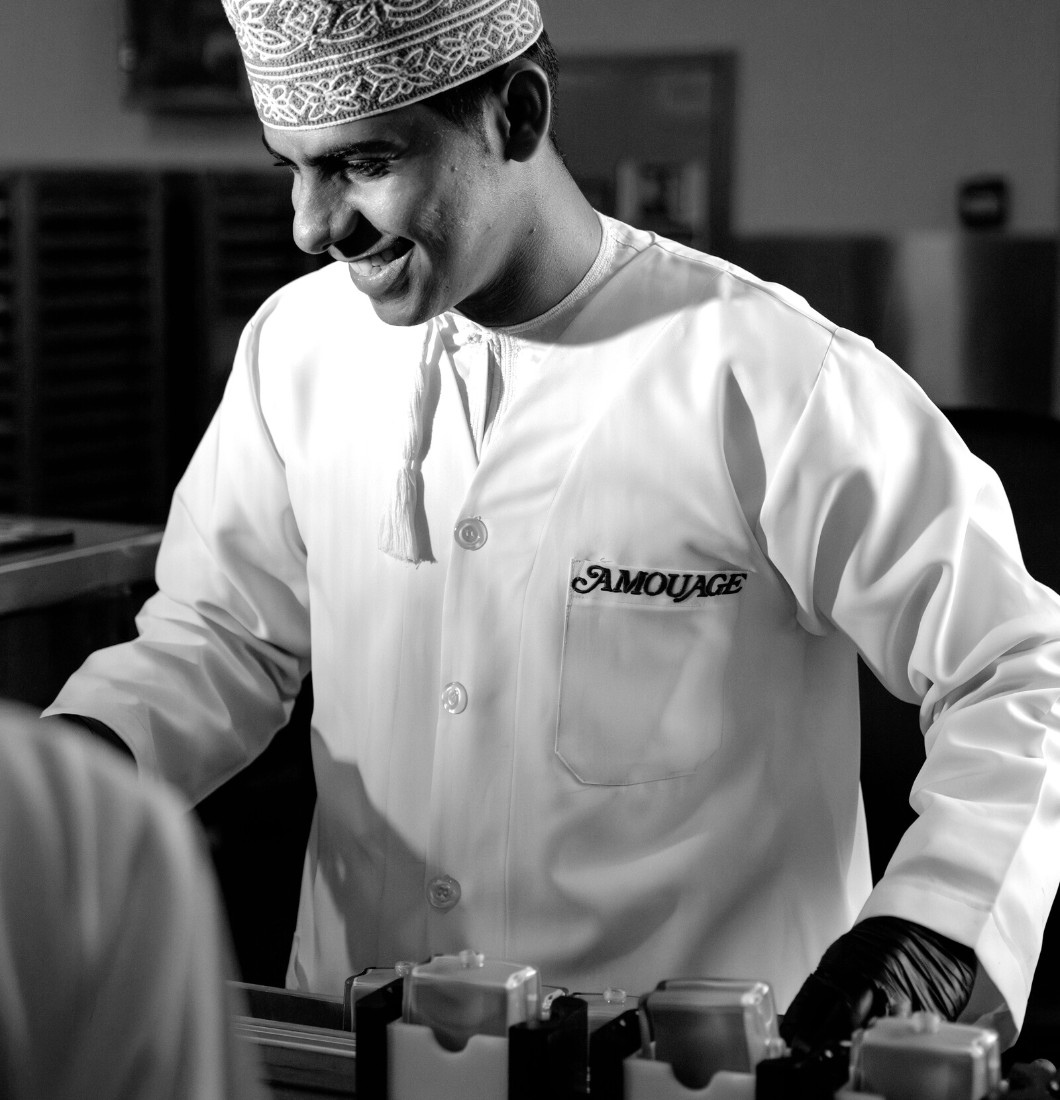
How do you personally select which fragrance to wear?
For me, it’s based on my mood, where I’m going, or who I’m meeting that day.
Great question. I approach my fragrance choices similarly to how I select my outfit.
I consider what’s appropriate for the occasion. For example, if I’m working at the manufacturer, I’ll choose an outfit that’s practical for that environment – so no suits. However, if I’m attending a chic event in Dubai, I might pick something that conveys the event’s glamour. The same goes for fragrance. Some fragrances make me feel casual and comfortable, while others feel more sophisticated, like wearing a tuxedo. Sometimes, I prefer a fragrance that’s not too diffusive or strong, especially if I’m going to the gym or yoga. In those cases, I’ll choose something more intimate, like a woody or musky scent. But if I’m attending an event with 500 people and want everyone to know Amouage has arrived, I might wear something bold like our fragrance, Interlude.
What has been your biggest accomplishment at Amouage?
My biggest accomplishment is accepting the mission to continue and preserve Amouage’s original vision. If I were to consider another personal achievement, it would be adding my drop to the beautiful stream of generosity
that characterises the brand. Contributing to
a vision that is pure, novel, and one that elevates the craft of perfumery, while bringing Oman’s values of generosity and hospitality to life, has been a true honour. I believe I’ve helped increase awareness of what makes Oman so special, and what the country stands for around the world today. I’m proud that more people now know about Oman – though there’s a part of me that wants to keep it
a secret for myself. It’s a bit of a dilemma! Working with Amouage is about more
than just selling perfumes. It makes a huge difference to be a part of the vision of
a country, and to bring to life a philosophy that’s more than just a business.
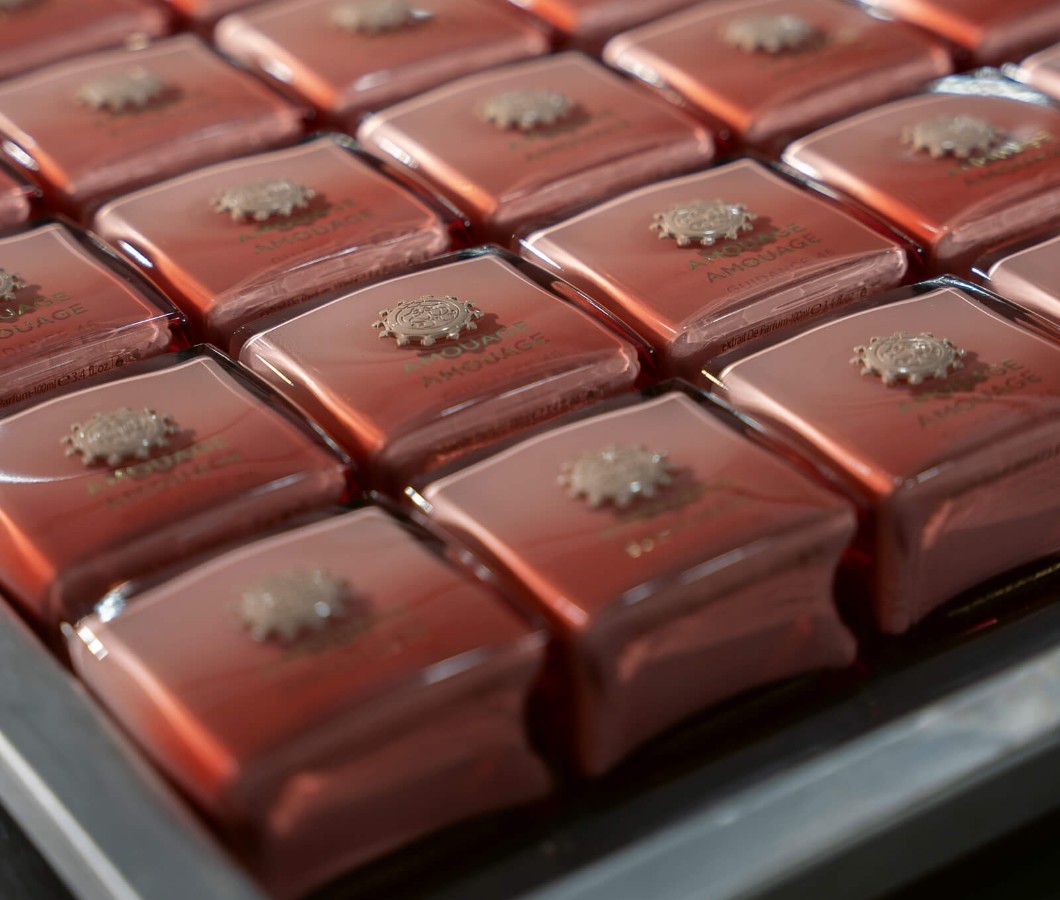
What’s your personal vision for the future
of Amouage?
We are in a very unique position here in Oman. We can do things at Amouage that no one else in the perfume industry can. Amouage will continue to be at the forefront of inventing the future of high perfumery, by creating exceptional products you can’t find anywhere else. We will continue to explore how to craft perfumes with specific characteristics that stand out. The vision for the future is to focus on the craft and creativity, thinking about what we can invent, or even bring back from the past in an authentic way. There are many techniques and crafts that have been forgotten or abandoned, as the world evolved. It’s not just about nostalgia though, it’s also about bringing those elements into a contemporary context and imagining what the future of perfume could be. It’s about blending the past with the present to create something truly exceptional for the future.
I love that. Finally, what is one scent that you couldn’t live without?
Personally, the note I can’t live without is orris, also known as iris. It’s a beautiful flower, usually purple, with a long stem and a big root. In perfumery, we use the root, which we dry for up to six years before distilling it. The process is time-consuming, and the yield is tiny, making orris absolute one of the most expensive ingredients in perfumery. I don’t love it because it’s expensive. I love it for its unique qualities. It is powdery, woody, floral, and musky. Orris creates a lot of texture – it smells like the most luxurious soap or the finest cashmere. To me, it also smells like an old book in a library. It’s even a bit buttery.
It’s simply stunning and ever so complex.
It is my favourite.







